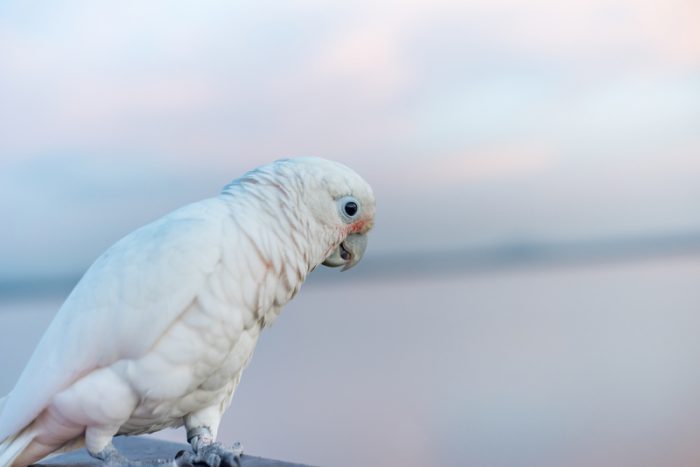

However, habitat degradation, trapping, and continued persecution are likely to be the cause of a moderate population reduction.

In spite of the suffering of the pressure of its capture, seems to have maintained an important population. This species has a very small range, but its population is severely fragmented or restricted to certain locations. So there are now more specimens in captivity than in their natural habitat. 8, 2022 Cockatoos have shown an extraordinary ability to complete a task by combining simple tools, demonstrating that this. Although many died of stress during transport, there is still hope after this ecological disaster, since many cockatoos have successfully bred in captive breeding programs. Golfing Cockatoos Reveal Ability to Use Combined Tools Feb. Many parrots were stunned and disoriented and captured for the pet trade. In the decade of 1970, Japanese loggers ravaged the islands. Current IUCN Red List Category: Near Threatened.In my beautiful uphill walk to the lab, I pass a castle (Goldegg), and a golf club (Goldegg Golf Club), Dr Osuna-Mascaró elaborated in email. This is evidenced by their ability to resist the temptation to eat a pecan nut for as long as 80 seconds in exchange for a tastier cashew reward, in a bird-centric version of the famous Stanford Marshmallow experiment. ‘Cockatoo golf’ was the brain child of lead author, Antonio Osuna-Mascaró, who credited his inspiration to his daily walks through a golf course on his way to work.

Other experiments have shown that the cockatoos are capable of a measure of self-control and delaying gratification. While the wild birds were less likely to participate in the tasks, those that did were able to solve the problems at the same rate as the captive birds.
Golfing cockatoo series#
The birds were presented with a series of 20 different tasks they could choose to complete in exchange for a nut reward. This was followed by a 2020 study comparing the captive-bred cockatoos' problem-solving abilities with those of wild birds caught in Tanimbar. Goffins are opportunistic feeding generalists in the wild and it likely that they possess domain general. The third only needed to see Figaro perform a single tool manufacturing demo before he also picked up the habit. The results suggested that learning tool creation is much easier than learning tool use, at least once the utility of a tool had been demonstrated. The Goffins cockatoo (Cacatua goffiniana). In subsequent experiments, one of the other males spontaneously started making tools by pulling splinters off the block of wood after just a few sessions. Primarily, they seem to use external objects to position nuts while feeding. Then birds were observed using tools in the wild, although this behavior was limited to corvids (crows and jays). Parrots, by contrast, have mostly been noted for their linguistic skills, and there has only been limited evidence that they use anything resembling a tool in the wild.
Golfing cockatoo how to#
Now, Figaro and his cockatoo cronies are back, having learned how to combine tools-in this case, a stick and a ball-to play a rudimentary form of "golf," according to a new paper published in the journal Scientific Reports.Īs Ars' Science Editor John Timmer explained in 2012, tool use was once thought to be one of the defining features of humans, but examples of it were eventually observed in primates and other mammals. Other cockatoos who repeatedly watched Figaro's performance were also able to do so. Figaro showed a surprising ability to manipulate single tools to maneuver a tasty nut out of a box.

Several years ago, we introduced Ars readers to Figaro, a precocious male Goffin's cockatoo kept in captivity and cared for by scientists in the "Goffin lab" at the University of Veterinary Medicine in Vienna. Two other cockatoos figured out different tool-using techniques to achieve the same result. Figaro the cockatoo displays his "primate level" combination tool-using skills by playing a cockatoo version of "golf," and choosing the correct hole for a cashew reward.


 0 kommentar(er)
0 kommentar(er)
